Trees Birds Mammals Fish Amphibians Reptiles
Wild Algarve
Bookshop
Inocybe stellatospora (Peck) Massee - Woolly Fibrecap
Phylum: Basidiomycota - Class: Agaricomycetes - Order: Agaricales - Family: Inocybaceae
Distribution - Taxonomic History - Etymology - Identification - Toxicity - Reference Sources
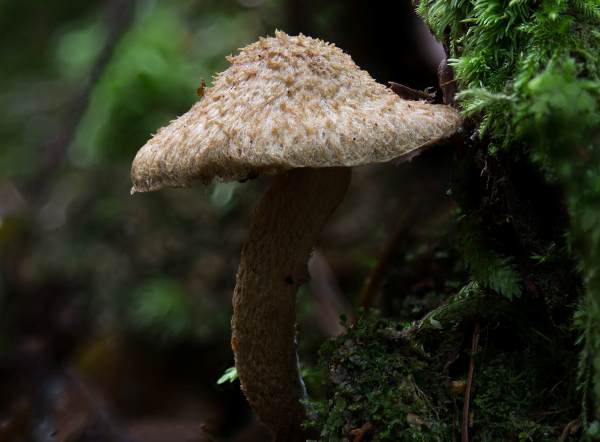
Inocybe stellatospora is not a common species in Britain, although it is found quite frequently in some parts of mainland Europe. This is not the only fibrecap mushroom with a shaggy cap surface, but that feature plus its star-like spores helps to make it fairly distinctive in a genus of mainly small brown mushrooms that are notoriously difficult to separate to species level.
Particularly in areas of acidic soill, this smallish fibrecap occurs in broadleaf and mixed woodland.
Inocybe is a difficult genus, with numerous 'little brown mushrooms' (LBMs as they are commonly called) that to the naked eye appear to be identical until they are examined under a microscope. Alan Outen and Penny Cullington have produced a very detailed key, without which I would not want even to attempt identification of fibrecap mushrooms. It takes time: this is not a simple process, but it is very straightforward to follow. You need specimens in prime condition complete with any basal bulb, and it is crucial to minimise handling, otherwise this may remove caulocystidia (stem cystidia) or other identifying features. See the references section below.
Distribution
Inocybe stellatospora is an uncommon woodland species throughout most of Britain and Ireland. These toxic little toadstools are found in many countries of mainland Europe, and they are also recorded in parts of North America.
Taxonomic history
In 1873 American mycologist Charles Horton Peck (1833 - 1917) described this fibrecap, giving it the binomial scientific name Agaricus stellatosporus. The currently-accepted scientific name Inocybe stellatospora was established by British mycologist George Edward Massee (1850 - 1917) in a 1904 publication.
Synonyms of Inocybe stellatospora include Agaricus stellatosporus Peck, Inocybe leucocephala Boud., Astrosporina leucocephala (Boud.) Rea, Hebeloma stellatosporum (Peck) Sacc., Inocybe lanuginosa var. longicystis (G.F. Atk.) Stangl & Enderle, and Inocybe longicystis G.F. Atk.
Etymology
Inocybe, the genus name, means 'fibrous head', while the specific epithet stellatospora is derived from the Latin adjective stella, meaning stars - a reference to the stellate or star-like form of the spores.
Toxicity
Inocybe stellatospora is a toxic toadstool that grows in habitats where people expect to find edible mushrooms. That makes it very dangerous. The symptoms of poisoning by this and several similar Inocybe species are those associated with muscarine poisoning. Excessive salivation and sweating set in within half an hour of eating these fungi. Depending on the amount consumed, victims may also suffer abdominal pains, sickness and diarrhoea, together with blurred vision and laboured breathing. Deaths of otherwise healthy people from eating these kinds fungi are not commonly reported; however, anyone with a weakened heart or with respiratory problems is much more at risk.
Identification guide
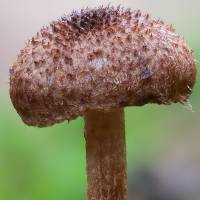 |
Cap
1.5 to 3cm in diameter, campanulate or conical at first, becoming broadly convex, not flattening completely and often retaining a low umbo and a downturned or slightly inrolled margin; cap surface densely fibrous with pointed brown scales that stand upright near the centre.
Beneath the cap surface the flesh is whitish to very pale brown and unchanging. |
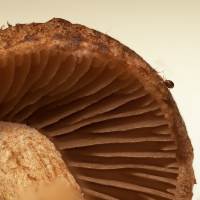 |
Gills
The moderately-spaced, adnexed gills start off whitish or pale grey-brown
and they darken with age. Cortina present when fruitbodies are young.
Stem
3 to 6mm in diameter and 2 to 6.5cm tall, the stem is cylindrical, sometimes with a slightly bulbous non-marginate base; covered in shaggy brown fibres, near the apex. Stem flesh is whitish flushed pale brown especially towards the stem base; unchanging. |
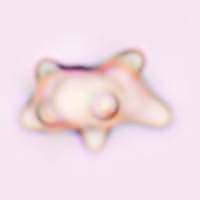 |
Spores
Irregularly stellate (ornamented with prominent rounded nodules) 8-10 x 5.5-7µm.
Spore print
Dark brown. |
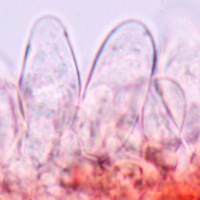 |
Cheilocystidia
Variably fusiform to langeniform, 50-80 x 10-20μm; often slightly capitate and sometimes with apical crystals.
|
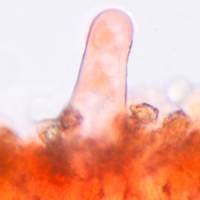 |
Pleurocystidia
Present and often abundant; cylindrical-lageniform, 50-80 x 15-25μm.
|
Spore print |
Dull brown. |
Odour/taste |
Odour not distinctive - but note that this is a poisonous mushroom and so tasting is inadvisable. |
Habitat & Ecological role |
On acidic soil and rotten wood fragments in broadleaf and mixed woodland; also often with sphagnum moss around conifers. |
Season |
Summer and autumn in Britain and Ireland |
Similar species |
Several other similarly shaggy-capped Inocybe species can only be identified confidently by detailed examination of microscopic characters. |
Reference Sources
Fascinated by Fungi, 2nd Edition, Pat O'Reilly 2016, reprinted by Coch-y-bonddu Books in 2022.
Funga Nordica: 2nd edition 2012. Edited by Knudsen, H. & Vesterholt, J. ISBN 9788798396130
Alan Outen and Penny Cullington (2009), Keys to the British Species of Inocybe.
BMS List of English Names for Fungi
Dictionary of the Fungi; Paul M. Kirk, Paul F. Cannon, David W. Minter and J. A. Stalpers; CABI, 2008
Taxonomic history and synonym information on these pages is drawn from many sources but in particular from the British Mycological Society's GB Checklist of Fungi.
Acknowledgements
This page includes pictures kindly contributed by David Kelly.
Top of page...
Fascinated by Fungi. Back by popular demand, Pat O'Reilly's best-selling 450-page hardback book is available now. The latest second edition was republished with a sparkling new cover design in September 2022 by Coch-y-Bonddu Books. Full details and copies are available from the publisher's online bookshop...